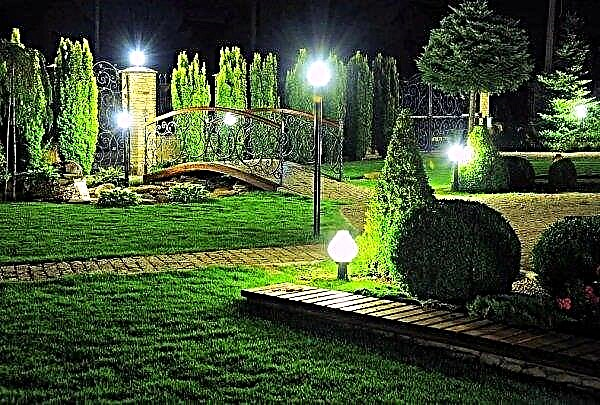A beautiful garden is not only well-groomed, attractive flowers, shrubs and trees. An important element of the design are the neat, harmoniously inscribed footpaths in the landscape.
What is a step track
Often when choosing a style for their personal plot, people try to recreate the natural landscape. With this approach, it is important to observe the line at which the garden will look well-groomed, and not abandoned and wild. Therefore, take into account certain nuances:
- selection of plants, their combinations;
- decoration of farm buildings;
- site topography;
- kind of tracks.

It is worth paying attention to the step-by-step paths in the garden. This element of decorating the site allows you to harmoniously compose the finishing material from which the object will be made, with plants. On such trails there will be no stagnation of rain and melt water. Also, such paths are an economical option compared to analogues of solid paving.
A garden path is the most common element of decor. Important is not only its aesthetic appearance, but also the correct location. Indeed, the ease of use of all corners of the garden depends on how well it fits into the space of the entire plot.
Did you know? The production of paving slabs is inextricably linked with concrete. For the first time, a concrete floor 25 cm thick was discovered in Yugoslavia in a hut on the banks of the Danube. The find dates back to about 5600 BC. e.
Benefits of Walking Paths
- Such objects have numerous advantages:
- Easy styling.
- Long service life.
- Presentable look.
- Harmonious combination with other devices and garden elements.
- The ability to combine with any design style of the site.
- Profitability.
- The speed of construction.
- Execution in any geometric shape you like.
Step Layout Rules
In order for the path on the lawn to please the owners of the site with its appearance, it is necessary to approach its installation correctly. First you need to think over the scheme.
When planning, you should adhere to certain rules:
- Take into account the relief of the site. The path should harmoniously fit into the landscape with its bends.
- Profitable emphasize the dignity of the garden or hide his flaws.
- Serve as a designer to combine all the elements of the landscape.
- From the track should be the most attractive corners are visible the garden.
- Closed track system preferred. If possible, they should be avoided so that the main lawn is dotted with them.
- In modest areas perimeter trails are preferred.
- When building tracks avoid crossing them at an acute angle.
- Calculate object width, which should harmoniously fit into the size of the garden (usually at least 0.7 m).

Most often, direct paths are found in city parks. But there are times when you need to create the shortest path to any structure on a personal plot. The tortuous ones are designed to visually increase the boundaries of the garden. Both species have both advantages and disadvantages. Therefore, in modern landscape design often use a combination of strict geometric lines with winding.
This type of garden design elements contributes, on the one hand, to the division of the site into separate zones, and on the other hand, it unites into one whole. This is favored not so much by the competent arrangement of the tracks themselves, as by carefully selected material for their construction.
A stepping path is as important an element of the lawn area as all buildings. Therefore, it is important to think about their arrangement along with the construction of the house itself and all outbuildings. It is best to draw up a detailed diagram, drawing on it all the objects (house, garden, gazebos, bathhouse, greenhouses, sheds, playground, pond), and then connect them all in straight or curved lines.

Also, when planning the site, it is necessary to take into account the materials from which not only the house and other buildings will be built, but also the communication routes between them. They must be compatible with each other.
If rainfall often occurs, consider draining the drainage system along the sides of the paths.. This is done without fail, since water during freezing can spoil any material from which design objects are made. Also, trees with a powerful root system should not grow near the coating, since their roots easily deform structures even from the strongest material.
Important! A step-by-step path can be arranged not only on land. If you turn it into a small bridge, it will decorate a shallow pond on the site. In this case, the elements should be cast from concrete.
Material selection and creation tools
To equip a step-by-step path in the garden, a set of materials and tools is needed, namely:
- stone or other material;
- crushed stone;
- sand;
- gravel;
- building level;
- sledgehammer;
- hammer;
- wheelbarrow;
- bucket;
- construction knife;
- shovel;
- measuring tape;
- twine.

The most durable material to use is hard rock (marble, granite). The advantage of its use for construction is that it is the stone that most effectively combines with the green carpet of the lawn. The downside is the high final cost of such structures, as well as technical difficulties in their construction.
Did you know? The heyday of cobblestone pavements occurred during the Roman Empire. Masonry roads were used, for example, in the construction of the road to Palantine Hill and in the construction of the bridge city of Pompeii.
Installation of a brick path is more attractive in material terms. However, the brick begins to crumble over time and the path will lose its former beauty. Clinker pavers paths are durable in operation. This material is easily repairable and also environmentally friendly.
It is extremely rare to place a decor element in concrete and asphalt on household plots, as this requires special equipment. However, the construction cost in this case is low. There is a material - decorative concrete. It is reliable and durable, can be painted, can be laid out with mosaics, etc.

The device of the track on the lawn
Do-it-yourself arrangement of a step track does not require special skills and special knowledge. However, you still have to pay attention to some aspects, because the functionality and usability of the trail directly depend on the performance of these tasks.
Important! If the building material is large, for example, a large stone, then it should be drowned in a lawn using a building mixture, not sand.
The work plan is as follows:
- Mark on the site diagram all the structures and the proposed options for the location of the tracks.
- Outline the boundaries of future paths using pegs, twine and a measuring tape.
- Direct laying of stone, slabs or other selected materials. For this, at the place of the future location of each fragment, it is necessary to outline its contour.
- Using a shovel, remove the soil layer in the areas where each track element will be located.
- Tamp the soil layer to prevent further subsidence under the stone.
- Pour a layer of sand and gravel into the recesses that have formed.
- On the resulting sand cushion, lay out the selected material and deepen it.
- After completion of paving, fill the seams between stones or tiles with a layer of sand.
 In the same way to lay other elements of the decor of the trail to your liking
In the same way to lay other elements of the decor of the trail to your liking
Now you know how and from what to make a path on the lawn. Remember that you should take into account the degree of its load in the future and the purpose. With the right material and competently executed work, the path will be functional for many years.












